Le first part of our injury investigation related to padel was instructive. The 158 players who responded to our survey allowed us to confirm that the lower body suffers in our sport, just like the dominant arm.
Tendinitis and epicondylitis are the most common conditions, just ahead of sprains and strains, followed by back pain. THE padel even took some of you to the hospital, sometimes with the need to undergo an operation: it happened to about 10% of our respondents.
In this second article devoted to your major and minor sores, we will go more into the psychology of the player: what he does when the injury occurs, how he treats himself and how he manages the fragilities of his body to continue his sporting practice. .
When the injury occurs
■ When an injury affects you, what do you do? The answers to this question reveal a contrast between “reasonable” (even freaked out?) players and those who are less so. If 47 respondents out of 158 tell us “to stop systematically so as not to make things worse”, they are 91 to “continue to play if the pain is bearable”.
Having become reasonable again on leaving the field, 85 of our players say they consult an osteopath or a physiotherapist and 45 go to the doctor, or even to the hospital, for treatment. But then only 41 out of 158 people complete their treatment or rehabilitation. You are 39 to admit “letting things drag on hoping that it will pass” and 38 to self-medicate yourself.
Among our respondents, we deplore three who had to stop the padel definitely following an injury: they have all our sympathy… And another, too bitten to stop, tells us that he changed hands for about six months!
Angel or demon ?
■ After the injury.- To the question “After an injury, do you respect the rest and recovery times recommended by health professionals?”, your answers confirm that players of padel oscillate between two attitudes. As Snowy in Tintin in Tibet, they are torn between the voice of the angel who tells them not to do anything stupid and that of the devil who urges them to do as they please...
The chart below shows that a slim majority of 51% are often (32,9%) or always (18,4%) reasonable, while nearly 49% of you are less so. In detail, 22,2% of you rarely respect medical recommendations, 24,7% trust their feelings more than doctors and 1,9% do not respect rest times at all...
We didn't question our panel on the reason for their attitude, but it's a safe bet that the demon of padel and its addictive side are forces that push us to resume sport too quickly or to play injured...
Where it hurts… and your palliatives
We asked our respondents the recurring condition or injury that hinders them the most in their practice of padel and how they deal with it. Their answers confirm that tendonitis, which affects 45% of them, and that of the elbow, epicondylitis (26,6%), are your worst enemies.
Here are your different wounds and your ways of coaxing them…
■ Tendinitis.- Ramses, 32, suffers from “tendonitis in the patellar tendon of both knees. I play less and try to stretch more…”; Greghi, 48, complains of “tendonitis in his Achilles heel, wrist and right elbow”, as well as pain in his adductors. He remedies this with “good warm-ups and preparatory ointments”; Patricia, 51, also has Achilles tendon pain: she treats it with “anti-inflammatories, lots of water and exercises recommended by [her] physio”; also suffering from Achilles tendonitis, Nathalie, 38, “lower the dose padel when a crisis occurs” and Franck, 39, does “stretching and strengthening muscles”; Arainu, 34, treats his tendonitis(es) with rest and works on his gestures with a coach to avoid bad positions; Bryan, 25, plays less often than before and spaces out his sessions to spare his painful wrist. against tendonitis, Sébastien, 34, massages and warms up longer before playing, then massages again and applies cold after playing.
■ Epicondylitis.— Those whose tendinitis is localized at the level of the elbow (tennis elbow) have the following tips: “I ice after the match and I put Diclofenac and Weleda creams”, tells us JFC, 41 years ; “I massage my forearm every night and I take care in case of a relapse”, recommends Armand, 51 years old; Paul, 32, has recourse to a physiotherapist, slows down his pace of play and has adapted his equipment by changing racquets; the order of TT, 44 years old, these are physio and osteo sessions, while Thomas, 26, increased the warm-up; same remedy for Bowl of rice, 65, who does “elbow exercises before each game starts”; Ulysse, 24, also has pain in his dominant arms as soon as he hits a big smash: “Problem completely solved thanks to Shockout dampeners”… Same remedy for PJ 24 years old: “Against tennis elbow, I first tried dampeners then I changed rackets so that it disappeared almost completely”.
A first cousin of epicondylitis, epitrochleitis is a “golf elbow from which suffers Fab, who faces “gritting his teeth and suffering”…
■ Shoulder.- Whether it's tendonitis or other ailments, the players' shoulder padel is sometimes put to the test. Philippe, 56, relieved his “tired and sore shoulder” by becoming a right-hand player “and too bad for the smashes, we work the bandejas ". Armougn, 42, suggests to him the greatest “relaxation of the arm during blows above the shoulder”. As for Max, 27, he controlled his shoulder pain through mobility exercises (active stretching, functional movements) and muscle strengthening.
Tiger balm or arnica?
■ Sprain.- To prevent ankle sprains, Julien, 33, practices a “warm-up with small demi-pointe jumps to put tension on the ankle muscles”, but also to wear good shoes and “pay attention to the bottom of the window which can block the foot”. White, 49, recommends for his part “new shoes for sanded carpet, and more worn shoes for WPT carpet, to avoid blockages and sprains of the ankle”; he also advises using a massage gun after games. Baptiste, 22, explains that, “following a sprained left ankle on the track, I have recalcitrant pain and I find it hard to be explosive forward. So I strap my ankle”. For his recurrent ankle pain (prior to padel) and his shoulder tendonitis, Rémi, 35, alternates between rest, creams before and after the game. Roman, 37, warns that “players with hyperlax ankles must imperatively wear suitable ankle supports”.
■ TFCC.- Au padel, TFCC can be a way of invective his partner: “You're doing bullshit after bullshit”! But here, it is rather the English abbreviation for Triangular Fibro-Cartilaginous Complex, a condition of the wrist. David, 46, solved this problem with the help of a WristWidget brand wrist strap and a lighter racquet.
■ The back.- Lumbar, cervical and sciatic pain are a classic among athletes. Those who suffer from it remedy it mainly with rest, abdominal sheathing, stretching, muscle strengthening, heating ointments and anti-inflammatories. Some also avoid arching and hitting par 3s. pacou, 33, who has hip and back pain, tells us he tries “to do as much strengthening and mobility exercises as possible to avoid any discomfort. If it's no longer bearable, I take a break for a few weeks”. “Think about your back, stretch before playing, even if it means looking like a guy who missed yoga class”, recommends Seb, 44 years. Also suffering from low back pain, Marco, 26, applies tiger balm and stretches systematically. Jérôme, 47 years; who suffers from a herniated disc, tells us that he takes “anti-inflammatories after each big session”.
A shell in the underpants
■ The feet.- Many of you resort to insoles for your foot problems. This is the case of Val, 31, who confides in “problems with the big toe joint (Editor’s note: hallux rigidus, perhaps?]. Pain reduced thanks to ointments and orthopedic insoles”. Davhk, 46, complains about his heels and resorts to insoles and massages.
■ And also… To the great evils, the great remedies… and to the small evils, the small remedies? Everyone has their own tips for getting better, sometimes recommended by a health professional, sometimes using the Coué method. One is treating his patellar syndrome in his knee with an “ICE protocol”, another has bought running socks which tighten the tibia and reduce his pain. A third has an open wound on his knee which gets worse during flexions: he therefore tries to anticipate as much as possible but flexes all the same when there is no choice... Some prefer prevention than cure by putting a shell in their underpants… There are those who swear by tiger balm and other fans of arnica before and after each game.
After all, the important thing is to believe in it and take care of yourself!
Rodo, 73 years old and zero recurring injuries
We end this long survey by reiterating our thanks to those who answered us and by publishing some of your most telling testimonies:
■ Davhk, 46 years old: “The padel is an addiction, I force myself to have one or two days a week off. For sore physio sessions if necessary and from time to time a reflexologist or osteopath”.
■ Bronx66, 57 years old: “I warm up 30 minutes before each match or training (at home) with massages (calves, wrist, elbow, shoulder, back), I do KTAPE on the ankles, I drink two liters per session of 1 h 30, I do not force on the cushioning, I see my osteopath in case of more intense pain than usual. I don't play tournaments, because on a day, too much downtime between two games and the body wouldn't support it, which is quite frustrating: reflection to be had on this subject (sets of 4 games or over a week like the tennis, approved championships)?”
■ Sébastien, 34 years old: “I take the time to warm up properly at the joint and muscle level. I massage myself with essential oil of wintergreen or tiger balm to complete in order to relax the muscles. Use of cold if pain otherwise cold shower for recovery and some stretching the next day. If pain without inflammation, use of heat via shower or hot water bottle on the painful area. I drink plenty of water to aid recovery and hydrate the muscles. And finally, rest with a diet adapted to my needs (carbohydrates and proteins).”
■ Robin, 29 years old: “Finish of a P500, (almost) perfect ground because there are areas that are a little sandy on the less worked areas (middle bottom, near grid). When trying to defend a glass 5 ball, my foot slipped and my whole body fell backwards, the foot remaining glued to the ground. Sprain plus rupture of the Achilles tendon.”
■ Fabian, 36 years old: “Choose your partner well: after being lobbed as a player on the right, I turn around to defend from the bottom of the course. That's when my partner decides to smash, except that instead of taking the ball, he opens my forehead 3 cm, heading to the emergency room to score points.
■ christino, 56 years old: “Never stop, listen to your body and reduce the intensity of the practice. To stop is to loosen up and be more vulnerable to recovery.
And the final word goes to the eldest of our respondents, Rodo, 73 years old, who writes to us, in Spanish (gracias, Rodo, a leerte place), that he is very rarely injured and does not suffer from any recurring injuries! Here is his prescription: “A few minutes before playing, stretch conscientiously, 40 seconds for each stretch, especially the legs”.
It can be trusted, it is not a “Rodomontade"!
To go deeper into the question of injuries, we recommend that you read articles by Dr Pierre-Olivier Ferrand in Padel Magazine.
And to immerse you in our previous surveys click HERE.
After 40 years of tennis, Jérôme falls into the pot of padel in 2018. Since then, he thinks about it every morning while shaving… but never shaves pala in hand! Journalist in Alsace, he has no other ambition than to share his passion with you, whether you speak French, Italian, Spanish or English.




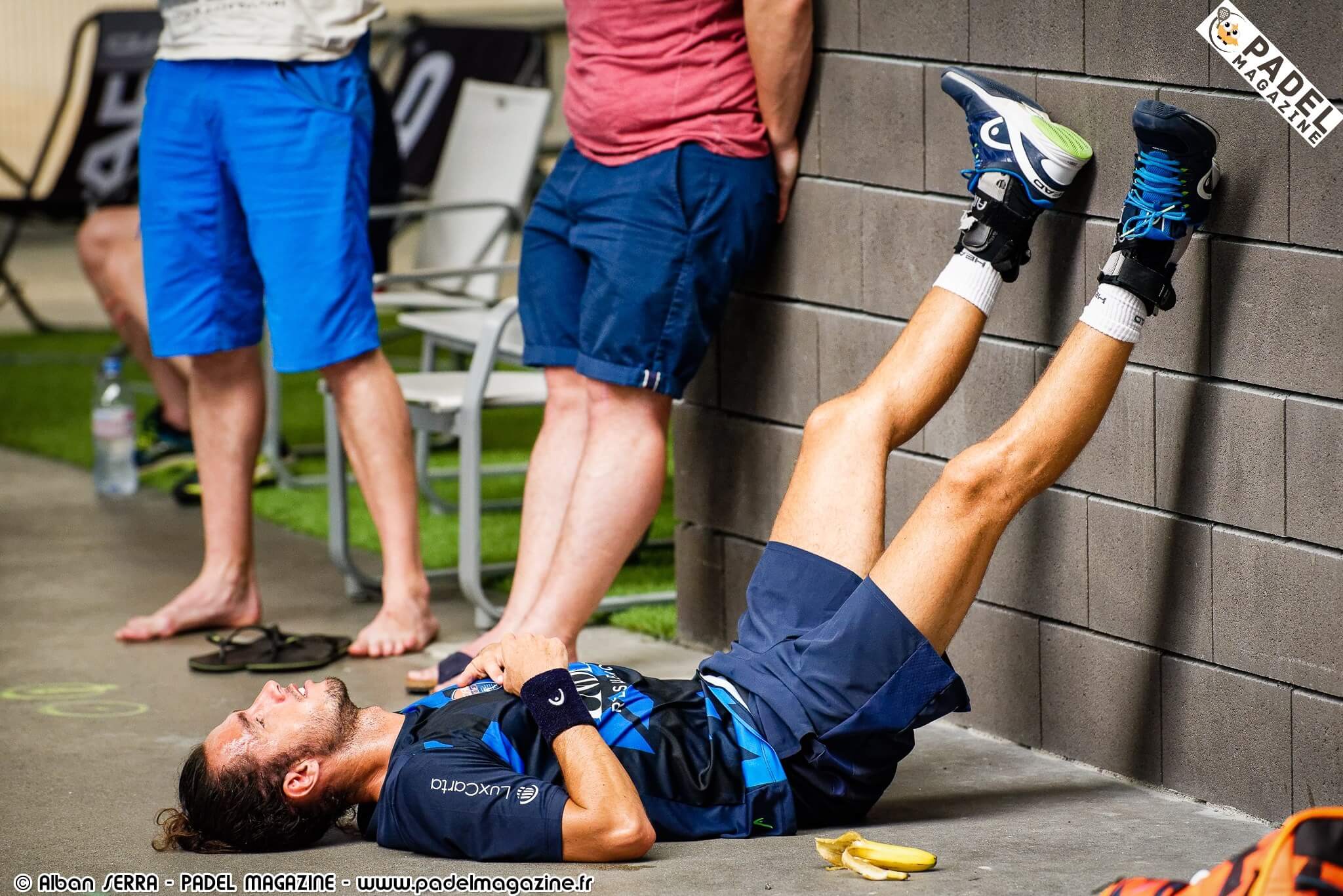
































































































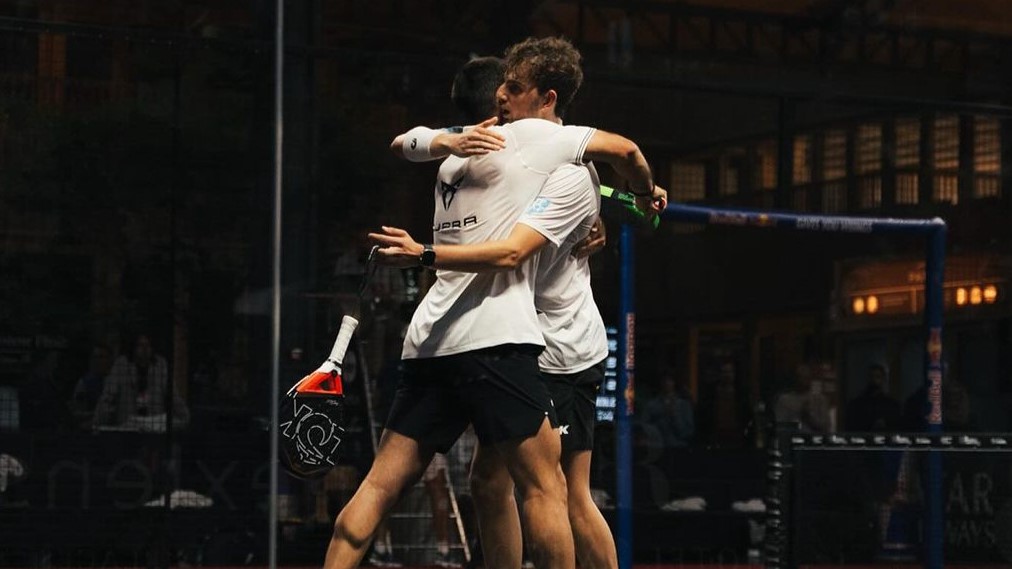 Premier Padel Brussels P2 – Mike Yanguas and Javi Garrido once again take the advantage over Stupa / Di Nenno
Premier Padel Brussels P2 – Mike Yanguas and Javi Garrido once again take the advantage over Stupa / Di Nenno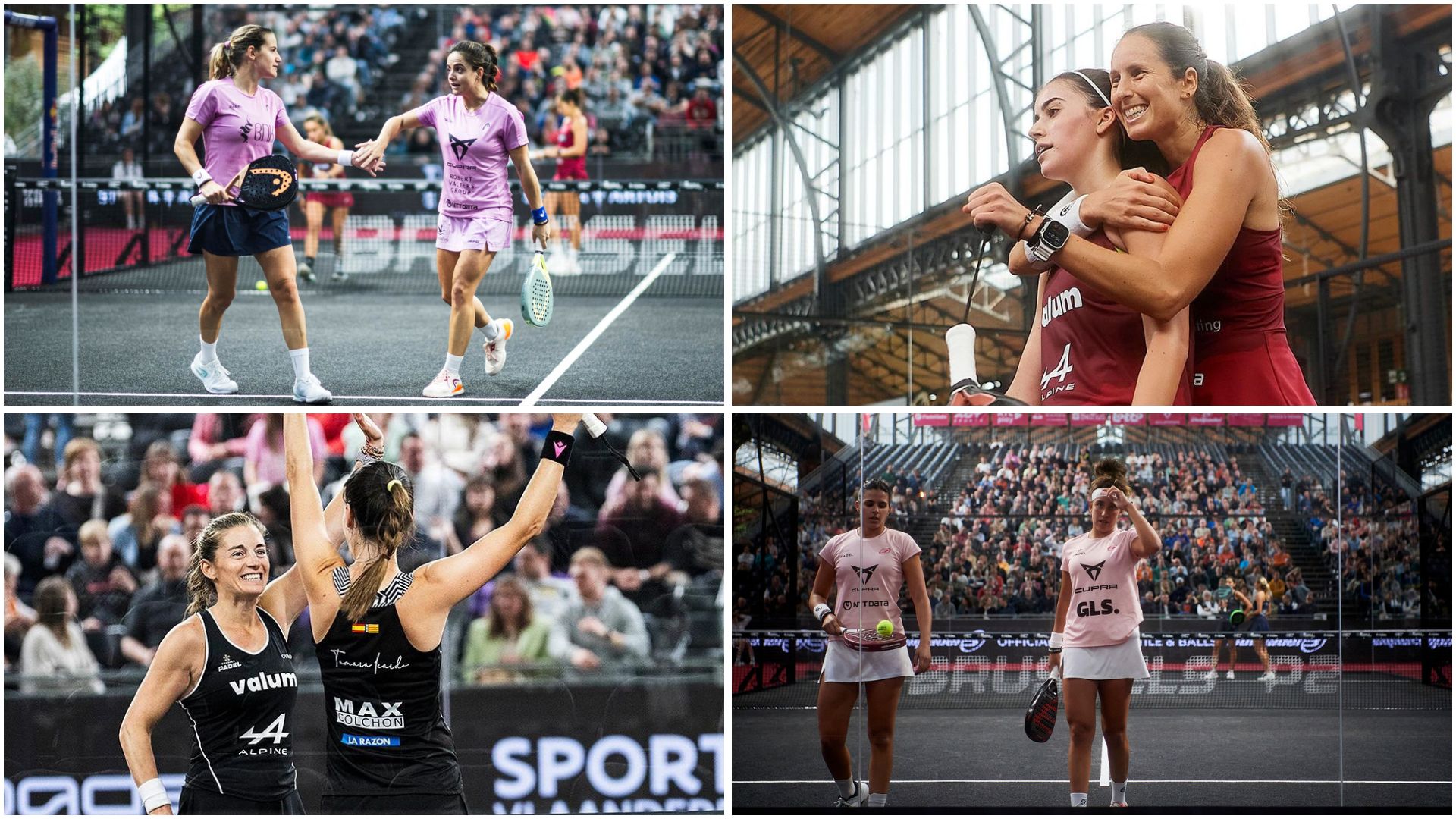 Premier Padel Brussels P2 – The women’s Big 4 at the semi-finals!
Premier Padel Brussels P2 – The women’s Big 4 at the semi-finals!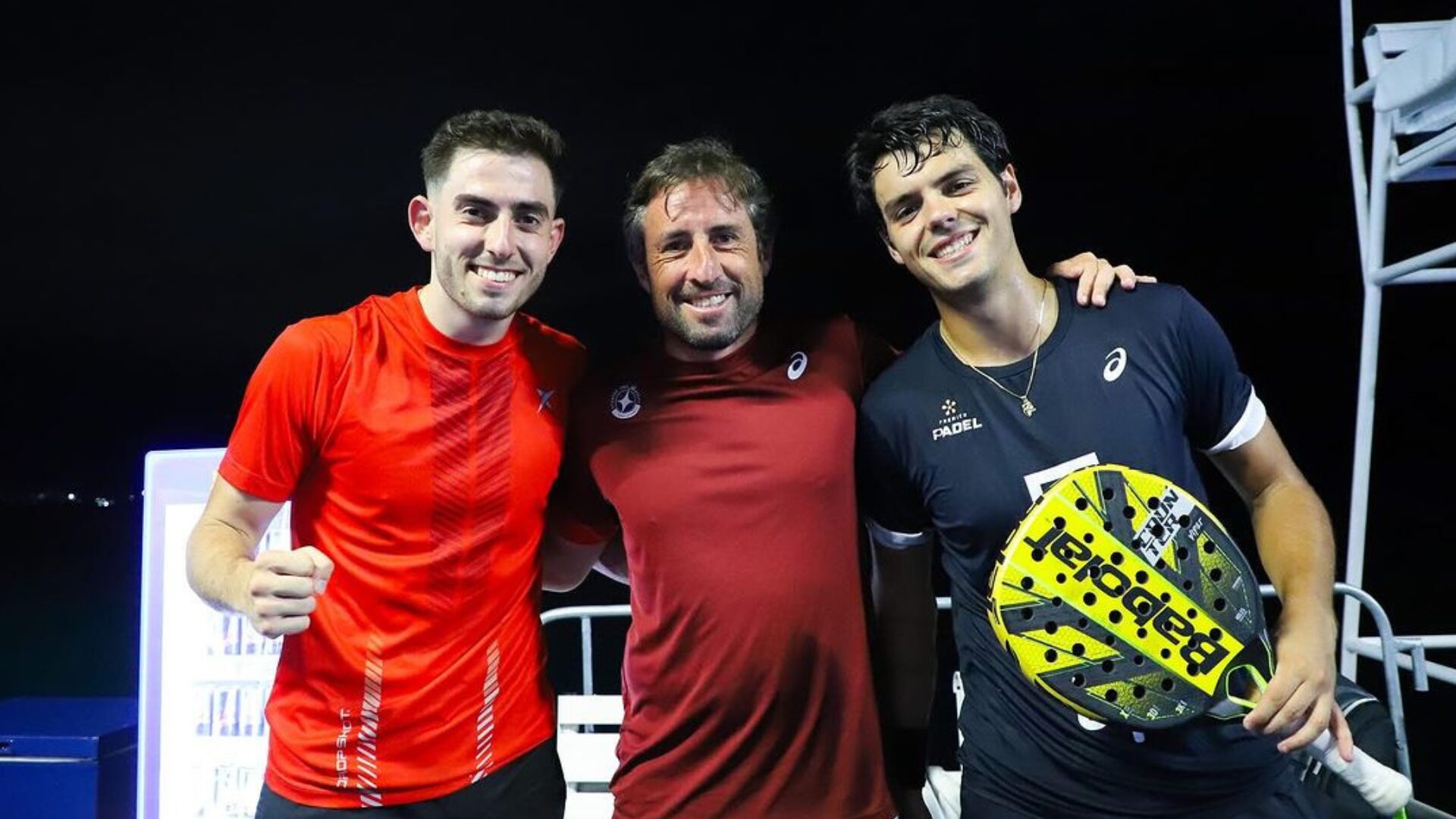 Premier Padel Brussels P2 – Sanz and Nieto win a big fight against Lebron / Navarro!
Premier Padel Brussels P2 – Sanz and Nieto win a big fight against Lebron / Navarro! Guillaume Codron de Sud Padel : “A family project”
Guillaume Codron de Sud Padel : “A family project” Nallé Grinda: “Democratize the padel in the USA with PadelX "
Nallé Grinda: “Democratize the padel in the USA with PadelX " Simon Boissé: “We know that there are two nations in front of us”
Simon Boissé: “We know that there are two nations in front of us” Marie Maligo: “This period of frequent changes of partners was beneficial for me”
Marie Maligo: “This period of frequent changes of partners was beneficial for me” Gilles Moretton: “We will be able to put the padel at the level of tennis”
Gilles Moretton: “We will be able to put the padel at the level of tennis” Two P1000 doubled prize money approaching!
Two P1000 doubled prize money approaching! José Manuel Escin at the inauguration of Casa Padel DOS: “Finally, and thank you!”
José Manuel Escin at the inauguration of Casa Padel DOS: “Finally, and thank you!”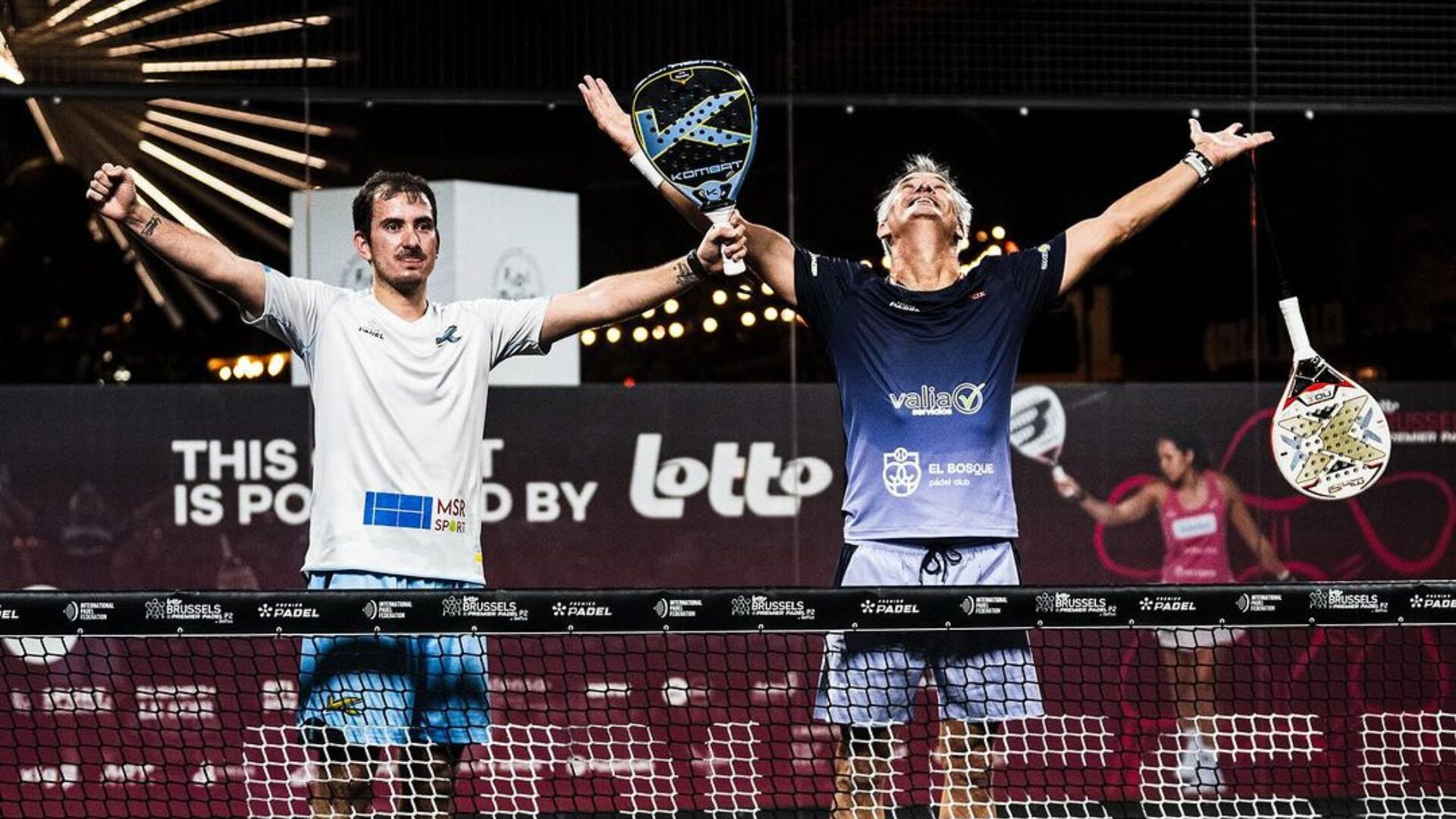 Miguel Lamperti: three tie-breaks and a return to the quarter-finals!
Miguel Lamperti: three tie-breaks and a return to the quarter-finals!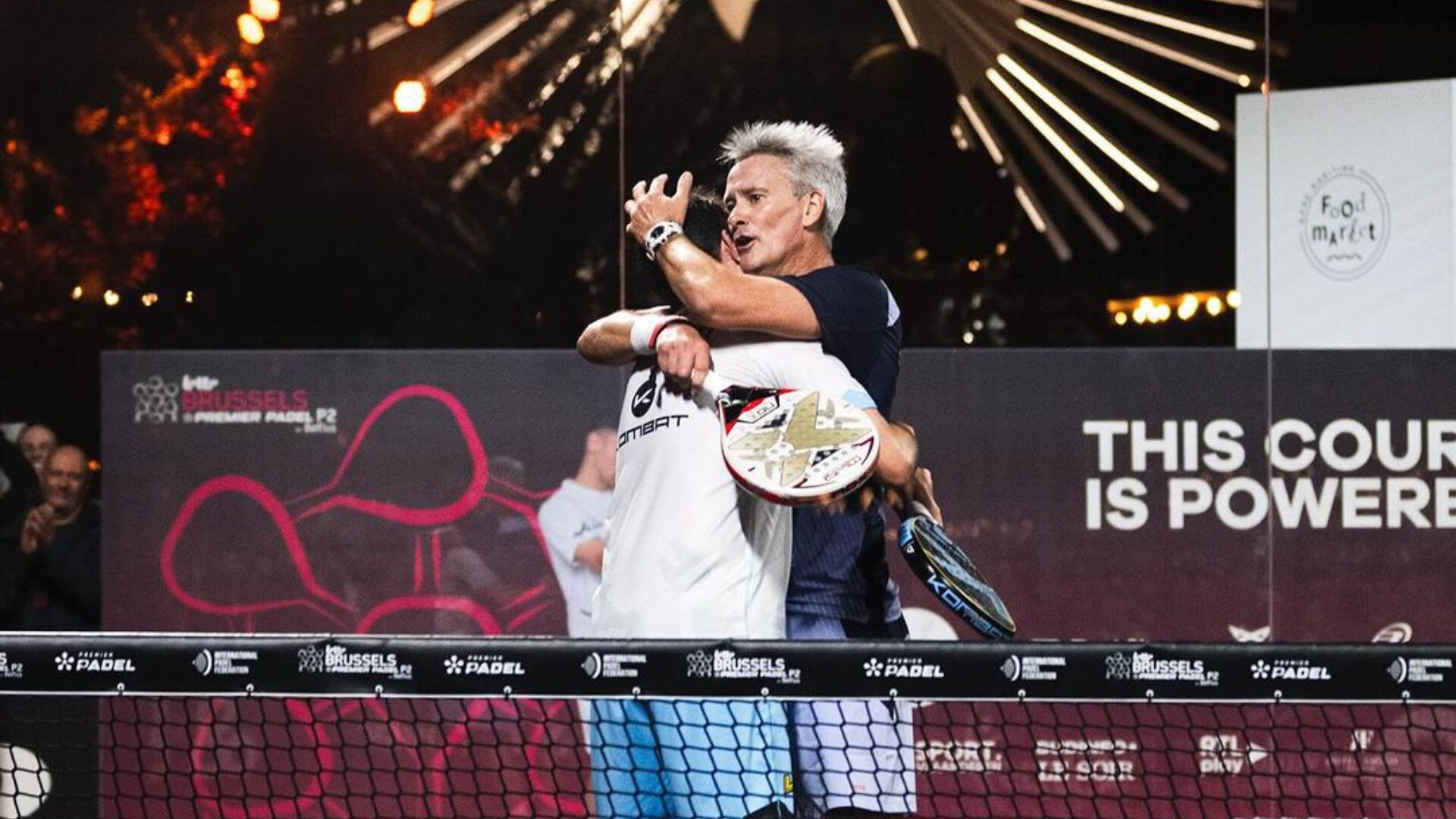 Big evening in Brussels with two seeded players on the mat, heckled number 1s…
Big evening in Brussels with two seeded players on the mat, heckled number 1s… A1 Padel – the French Open replaces the Mexican Open on the calendar
A1 Padel – the French Open replaces the Mexican Open on the calendar Padel Score comes to Tahiti for American Express Padel Cup!
Padel Score comes to Tahiti for American Express Padel Cup! Do you know the Rafa Nadal Academy Tour?
Do you know the Rafa Nadal Academy Tour? Play at padel on his yacht? Possible for €233.000!
Play at padel on his yacht? Possible for €233.000! Our Top 10 training courses padel in France and Europe
Our Top 10 training courses padel in France and Europe At the heart of padel – Episode 25: Paul and Andoni answer your questions
At the heart of padel – Episode 25: Paul and Andoni answer your questions Tactical padel – What to do when faced with players who systematically stay at the bottom?
Tactical padel – What to do when faced with players who systematically stay at the bottom? The basic tactics of padel
The basic tactics of padel At the heart of padel – Episode 25: Paul and Andoni answer your questions
At the heart of padel – Episode 25: Paul and Andoni answer your questions At the heart of padel – Episode 23: defend the window well
At the heart of padel – Episode 23: defend the window well Prohibition on playing topless Padel : the reasons
Prohibition on playing topless Padel : the reasons FIP Tour – Going far from Europe, THE strategy to earn points!
FIP Tour – Going far from Europe, THE strategy to earn points! What is a good football player? padel ?
What is a good football player? padel ? “Lefties give me headaches when I play against them!”
“Lefties give me headaches when I play against them!” At the heart of padel – Episode 14: how to earn points in winter?
At the heart of padel – Episode 14: how to earn points in winter? A par 4 is always a winner...even if you manage to defend it!
A par 4 is always a winner...even if you manage to defend it! Carbon fiber VS fiberglass: what to choose?
Carbon fiber VS fiberglass: what to choose? How to effectively test a racket padel ?
How to effectively test a racket padel ? La padel to fight Parkinson's disease
La padel to fight Parkinson's disease Don't play with a cracked or broken racket, your body will thank you!
Don't play with a cracked or broken racket, your body will thank you! Michel Cymes: “The padel, physically, it’s serious!”
Michel Cymes: “The padel, physically, it’s serious!” Jeremy Gala: “Promote the padel among young people in Belgium remains a challenge”
Jeremy Gala: “Promote the padel among young people in Belgium remains a challenge” The French Touch Academy organizes its selection day Padel-Study
The French Touch Academy organizes its selection day Padel-Study Report on the detection and training of younger generations
Report on the detection and training of younger generations